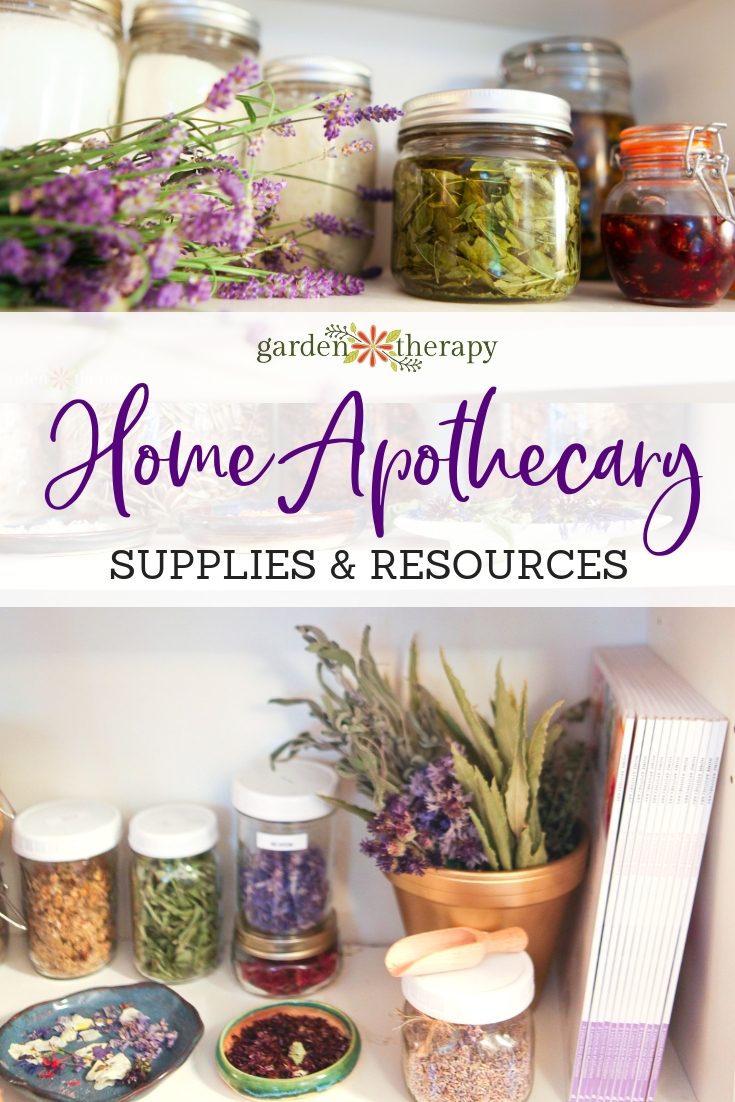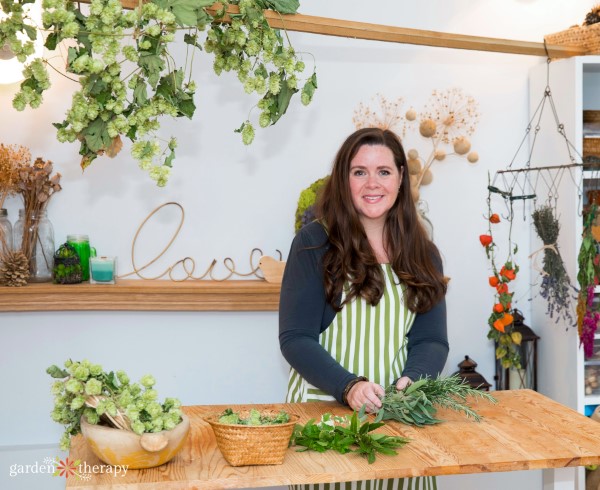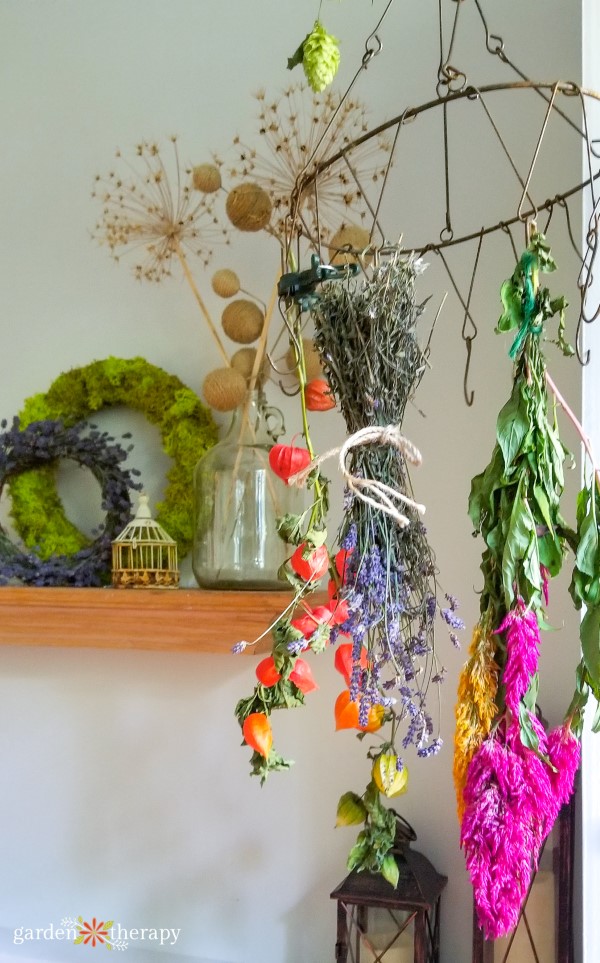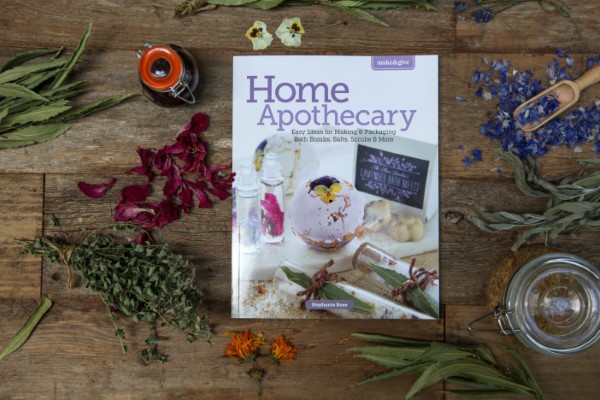You have come to the right place if you are looking to get started with making your own natural beauty products and stock up your home apothecary.
This resource guide is a companion page for my books on plant-based skincare, Make & Give Home Apothecary and The Natural Beauty Recipe Book. If you don’t yet have a copy of either of these books, head over to my shop to purchase them.
- Buy the Book: Make & Give Home Apothecary – Easy Ideas for Making & Packaging Bath Bombs, Salts, Scrubs & More
- Buy the Book: The Natural Beauty Recipe Book: 45 Easy-to-Make Skincare Recipes for the Whole Family
These two books both contain recipes that use ingredients from my own natural beauty apothecary, where I keep dried botanicals from the garden, various natural colorants, skin-nourishing oils, waxes, and butters, pure essential oils, and more.

My personal apothecary is a wonderful source of wellness and creativity (just looking at all of my supplies gives me inspiration for new recipes), and I want to encourage you to make your own. This resource guide will give you a ton of ideas for what to stock your own home apothecary with and how to find the various ingredients that are useful to have on hand, as well as equipment like double boilers and supplies for packaging.
My own apothecary has taken shape in what used to be my garage. Now it is a place where all of my natural beauty and herbal supplies are kept, so when I want to make a project I simply head out to the studio and begin creating! As you can see, it’s my happy place.

The garden studio is the perfect place for drying flowers and herbs because it is cooler than the house but dry and protected. Right now I have hops and a ton of flowers hanging to dry.

My apothecary garden shed is my happy place, and whether you have a whole studio or just a shelf to devote to it, I hope you will be inspired to begin your own home apothecary too. Here you will find everything from the ingredients to the tools you will need to get started making your own DIY plant-based beauty products from the books.
See all of the books that have been created in my studio here.
In many cases, you will have everything you need in your kitchen, in other cases, you may need to purchase some of the supplies. This resources and supplies page is updated regularly to ensure that the items you need to make these projects can be accessed easily.
DIY Natural Beauty Recipes Supplies and Resources
If you are here to get a handle on your shopping list so you can start making your own DIY plant-based beauty products and stock your apothecary, then let’s get to it! The supplies are listed by category so you can easily find recipe ingredients and materials from the two books. If the text is green, then it is a link you can click to take you straight to where you can buy the item mentioned. Some of the links go to affiliates which means that I get a small commission on each sale.
Equipment, Tools, and Supplies for the Home Apothecary
Brushes and Sponges
Labels and Tags
Many of the labels, tags, gift boxes, and bags that I use are from Evermine Occasions where I collaborate as a blogger. I have written 120 projects for Evermine with different customized labels each time. See all of my Evermine projects here.
I have also created a number of free canning label designs in both regular and wide-mouth sizes. For these, all you need is label paper and a printer.
See how to print and make labels here. Download and print the different designs from the links below:
- Free Printable Canning Labels (3 different designs to choose from)
- Free Canning Labels: Berries Design
- Free Canning Labels: Autumn Design
DIY Lip Balm Labels
Want a durable label for your homemade lip balm that looks great but is simple to make? Use a piece of duct tape! (I used this star pattern but there are plenty more decorative options to be found.)
Packaging
Tubes, tins, and pots for natural beauty projects are usually only available at specialty soap-making shops. You can certainly reuse the containers from store-bough cosmetics, just wash them well and boil to sterilize. You may also need some Goo Gone to remove the labels. If you are making large batches or want sparkling new containers, here are some that I use regularly.
- Clear Lip Balm Tubes with Lids
- Paper Lip Tubes
- BPA-Free White Lip Balm Tubes with Lids
- BPA-Free Blue Lip Balm Tubes with Lids and Turn Top
- Essential Oils Roller
- Amber Glass Spray Bottle Atomizer
- Gotoobs
- .25 oz Metal Tins
- 1 oz Metal Tins
- 2 oz Metal Tins
- 4 oz Metal Tins
- Metal Slide Tins
- Tea Filters (for tub tea)
Mason Jars
Mason jars are wonderful for natural beauty products. I would suggest buying plastic lids if you are going to keep them in the shower, as the metal ones will rust when exposed to moisture. Here are the ones that I like to use most of the time:
- Bernardin Mason Jars – 125 mL – Decorative
- Bernardin Mason Jars – 250 mL – Wide
- Kerr 0518 wide mouth Mason jar pint, 16oz
- Ball Mason Jars Wide-Mouth Can or Freeze – 16 oz
- Kilner Round Clip Top Jar, 34-Fl Oz
- Plastic Lid Regular Mouth
- Plastic Lid Wide Mouth
Equipment
- Silicone Ice Cube Tray
- Flower silicone soap mold
- Small Spatula
- Turkish Coffee Pot
- Double Boiler
- Kitchen Scale
Ingredients for the Home Apothecary
Oils & Butters
- Castor Oil
- Coconut Oil
- Jojoba Oil
- Raspberry Seed Oil
- Sweet Almond Oil
- Vitamin E Oil
- Wheat Germ Oil
- Cocoa Butter
- Shea Butter
Waxes
Essential Oils
There is much variety in quality for essential oils and in price as there is no separate regulation for essential oils. The best way to get started with essential oils is to purchase a starter pack and start using them. Remember, essential oils are powerful and should only be used with the approval of a healthcare practitioner. Many of the recipes in this book only contain a few drops of an essential oil, which may make you question whether or not it is necessary. But with these small-batch recipes and the potency of essential oils, it really does make a world of difference to have even 1-2 drops.
The essential oils I use the most in my plant-based beauty recipes are as follows:
- Carrot Seed Essential Oil
- Cinnamon Essential Oil
- Citronella Essential Oil
- Clove Essential Oil
- Eucalyptus Essential Oil
- Lavender Essential Oil
- Lemon Essential Oil
- Lemongrass Essential Oil
- Peppermint Essential Oil
- Pine Essential Oil
- Pink Grapefruit Essential Oil
- Rose Essential Oil
- Geranium Essential Oil
- Rosemary Essential Oil
- Sweet Orange Essential Oil
- Thieves Essential Oil Blend
- Vanilla Essential Oil
- Ylang Ylang Essential Oil
Dried Flowers and Herbs
Natural Colorants
Ground up dried herbs and other organics work well as natural colors in your handmade beauty products. While you may not get the same bright hues as with synthetic colors, you will get natural tints and the peace of mind that what is going on your skin is good for you.
- Green –spirulina, sage powder
- Golden yellow – safflower powder
- Yellow –turmeric
- Orange (yellowish) –annatto seed powder
- Orange (reddish) – paprika
- Pink – madder root
- Purple – ratanjot
- Brown – cocoa powder
Other
- Epsom Salts
- Pink Himalayan Sea Salt
- Ground Colloidal Oatmeal
- Coffee Beans
- Goat Milk Powder
- Pure Castile Soap
- Aloe Vera Gel
- Witch Hazel
- Manuka Honey
- Colloidal Silver
- Apple Cider Vinegar
Still need a copy of Home Apothecary and The Natural Beauty Recipe Book? Get your copies here today!

Here are Some Plant-Based Beauty Recipes to Get You Started:
- Pampering Peppermint Coconut Foot Scrub
- Easy Homemade Lavender Bath Salts
- Honey Dandelion Lip Scrub
- Lavender and Cocoa Butter Bath Melts
- Rosemary Lemon Soap-on-a-Rope






Great list! Using duct tape for lip balm labels is a great idea. Do you find that the edge where the tape meets gets sticky over time?
Not at all. But I guess if it did I could replace it. Although I tend to go through my lip balm very fast!
Every time I try to order the digital book, the PayPal link does not work… love your blog!
H Paula, how frustrating! I’m sorry that is happening. You can also get the book on Etsy (PDF version) and Amazon (Kindle version). I’m sure one of those will work for you. If not, please let me know!
Etsy: https://www.etsy.com/ca/listing/463587744/the-natural-beauty-recipe-book-pdf-45?ref=shop_home_feat_3
Amazon: http://amzn.to/2gMije2
Recently I purchased your book Home Apothecary. I am in love! I am looking to make the massage and lotion bars but cannot use beeswax, as I am allergic. Would soywax be a good alternative? And if so, would it match per gram? Or, is there another wax that I could use?
Hi Darlene, that’s wonderful! And yes, soy wax is a good alternative. It’s a bit drier feeling thank beeswax, which is slicker, but you can try it as a substitute in the recipes 1 to 1. There is also candelilla and carnauba wax which is plant based. It is hard and shiny so you would use less for firmness. Look for good quality cosmetic grade waxes with eco certification where possible.
Soy Wax: https://amzn.to/2OKRJ0c
Candelilla wax: https://amzn.to/2RXxxui
Carnauba wax: https://amzn.to/2RVeaBT
Thank you so much! I do happen to have some candelilla wax on hand as well, so I shall try that in a second batch. I too agree that all waxes should be ECO certified. Wish me luck!
Love that space and this guide!!
Thank you!
Thank you, Nellie!
I will be purchasing your Home Apothecary book when I get home from work! I’ve recently been delving into natural products and loved this post!
Thank you!